The Cannondale Jekyll shaped the era of enduro bikes and dominated the podium in the early days of enduro racing. After slipping into the shadows of modern bikes for a few years, it’s now making a comeback. Is the new Jekyll with its high-pivot rear suspension, idler pulley and long travel ready for the most demanding race stages, and are we looking at the next EWS winner?

15.8 kg (size M) | € 6,499 | Manufacturer-website
The Cannondale Jekyll has more experience than most bikes on the trails these days. In the early days of the Enduro World Series, the bike from the US brand was one of the most successful bikes of its time, if not the most successful. After many years in the shadows of other, more modern bikes, Cannondale are making a comeback with the latest edition of the Jekyll. What started out as a prototype downhill bike with two shocks, as seen on the tracks of the Downhill World Cup some time ago, has made it to production as an enduro race bike. With a single shock, an innovative rear suspension concept, 29″ wheels and 170 mm travel up front, Cannondale promise to deliver a bike that’s ready to take on the most demanding race stages right out of the box.
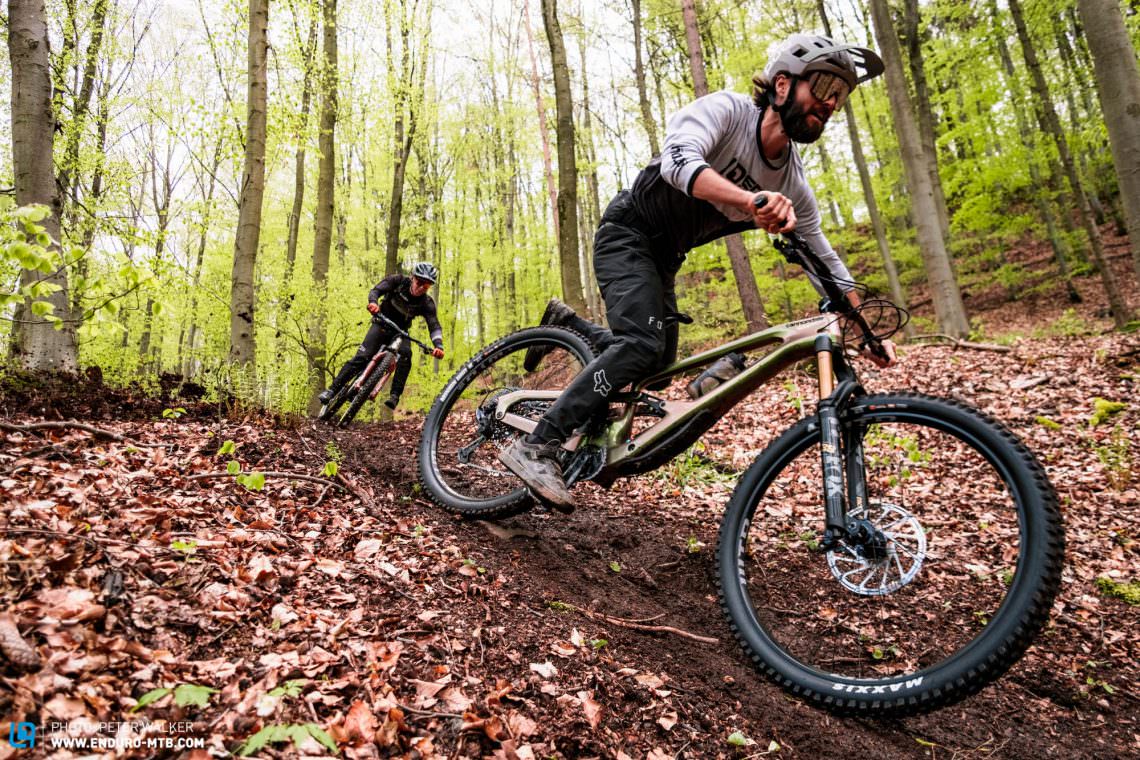
The high pivot rear linkage and guidler of the new Cannondale Jekyll
For the rear end of the Jekyll, Cannondale rely on a 165 mm travel Horst-link design and a particularly high pivot point, which isn’t only technically but also a visually surprising. The most striking feature is the shock that sits in the so-called Gravity Cavity inside the down tube of the carbon frame and is supposed to ensure a low centre of gravity on the Jekyll. The main pivot point of the chainstay is positioned very high on the frame, allowing the axle to move rear- and upwards almost all the way through its travel as the suspension absorbs impacts, thus giving way to obstacles more effectively. To counteract the resulting pedal kickback during compression, Cannondale make use of a “guidler” pulley on the main bearing. The combination of an idler pulley and chain guide should minimise pedal kickback and keep the chain in place when things get rough. But that’s not all, Cannondale’s so-called Proportional Response Design not only adapts the chainstay length but also the kinematics of the rear suspension to suit the frame sizes or rather the weight and size of the rider.
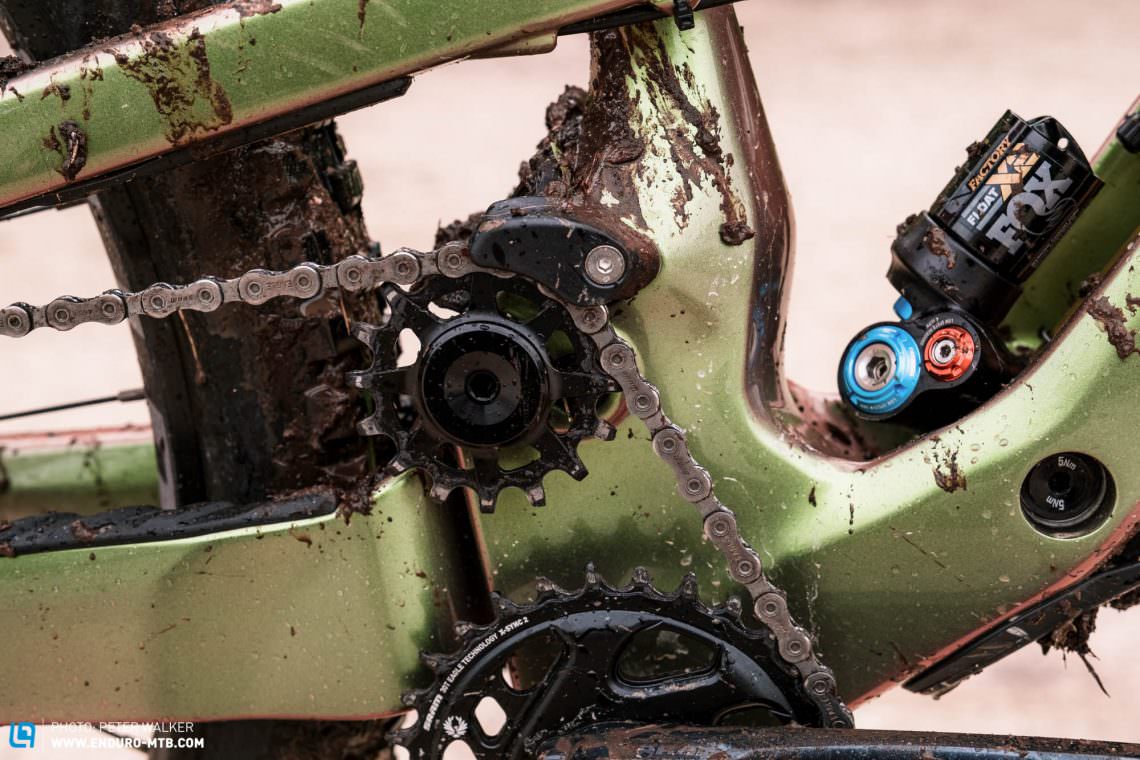

The new 2022 Cannondale Jekyll 1 in detail
The new 2022 Cannondale Jekyll will initially only be available with a full carbon frame, which comes shipped with protective film already covering the most important areas – excellent! While all cables are neatly routed inside the frame, they rattle at the upper port. A little tape or a cleverly positioned cable tie can remedy the problem. Generously dimensioned seat and chainstay protectors keep things nice and quiet at the rear while also protecting your frame. A small fender on the seat stay keeps the main pivot bearing from being bombarded with dirt and the large plastic protector on the down tube also manages to keep the shock relatively clean, but you’ll find a small puddle of mud forming over the bottom bracket in very bad weather. Nevertheless, the design offers enough space for a bottle cage in the front triangle, so you don’t have to resort to drinking the muddy water that’s collected in the bottom of the frame.
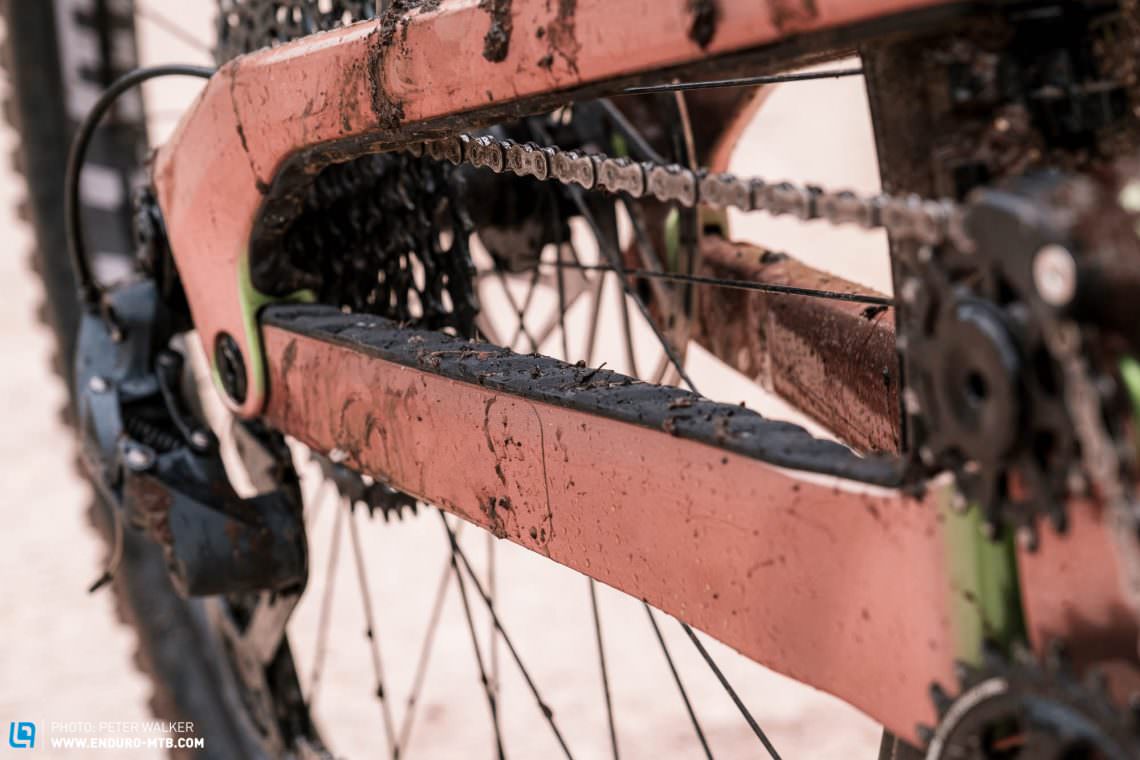


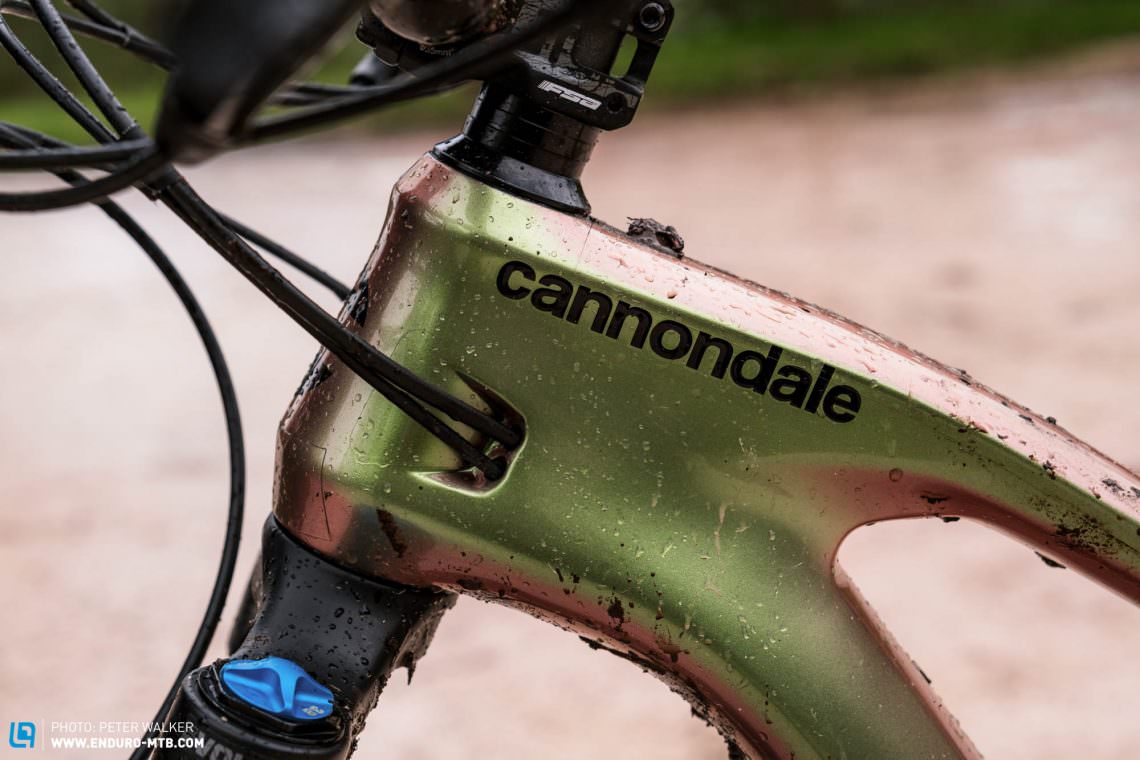

The geometry of the new 2022 Cannondale Jekyll explained
The new Cannondale Jekyll will be available in four frame sizes. We tested the bike in size M, which turned out to be rather small. Here you can see Cannondale’s intentions, designing the bike for quick, spontaneous direction changes to allow riders to compete in enduro races where you’re riding blind and must react with lightning speed. The reach in size M is just 450 mm, though this is combined with a rather tall stack height. In combination with the slack head angle and long travel, this should instil the rider with confidence. The seat tube angle is 77.5° for all sizes, resulting in a compact riding position combined with the tall front end. Regarding chainstay length, Cannondale ensure a consistent riding experience for riders of all frame sizes by adjusting the length of the chainstays proportionally to the front centre. The seat tube measures 410 mm on the size M and allows you to select from frame sizes S–L according to your preferred reach. However, the jump in size from L to XL is very large, with an overly long 500 mm seat tube.
| Size | S | M | L | XL |
|---|---|---|---|---|
| Seat tube | 390 mm | 410 mm | 445 mm | 500 mm |
| Top tube | 541 mm | 569 mm | 588 mm | 627 mm |
| Head tube | 100 mm | 110 mm | 120 mm | 130 mm |
| Head angle | 64.0° | 64.0° | 64.0° | 64.0° |
| Seat angle | 71.5° | 70.5° | 72.5° | 73.5° |
| Chainstays | 430 mm | 435 mm | 442 mm | 450 mm |
| BB height | 348 mm | 348 mm | 348 mm | 348 mm |
| Wheelbase | 1,193 mm | 1,227 mm | 1,264 mm | 1,311 mm |
| Reach | 425 mm | 450 mm | 475 mm | 510 mm |
| Stack | 625 mm | 634 mm | 643 mm | 652 mm |
The new 2022 Cannondale Jekyll – Spec, prices and availability
The new Jekyll will initially be available in two build options, both featuring the same full carbon frame. The new bikes should be available from mid-July and are priced between € 4,599 and € 6,499. A frameset will be available for € 3,499.
The flagship model – Our test bike, the 2022 Cannondale Jekyll 1

The flagship Jekyll 1 will be available in two colour variants. Our Beetle Green test bike changes colour depending on the angle at which the sunlight hits it – nice! The € 6,499 bike comes with a FOX 38 Factory GRIP2 fork offering 170 mm travel up front and a FOX Float X2 Factory shock at the rear. You get powerful SRAM Code RSC four-piston brakes paired with a large 220 mm rotor at the front and a 200 mm version at the rear. This is the kind of braking power we expect from an enduro race bike – thumbs up! Shifting is taken care of by a SRAM GX 12-speed groupset, which, apart from the slight additional weight, offers the same shifting performance as the more expensive X01 and XX1 models. The bike on test weighs 15.8 kg. Supplied in-house, the size M comes specced with a 150 mm DownLow dropper post. It can be inserted all the way into the frame, but the remote feels a bit spongy. We weren’t convinced of the WTB KOM Trail i30 wheelset either. It doesn’t live up to the potential of our test bike and had to be re-tensioned after only a few descents. We’d recommend swapping these out for something sturdier. The fitted MAXXIS tires can also do with an upgrade. The Assegai up front and the Minion DHR2 at the rear make use of the 3C MaxxTerra compound and puncture-prone EXO+ casing. On the other hand, we were impressed with the 780 mm wide Cannondale 1 Carbon Riser Handlebar. On the trail, it does a good job of absorbing smalls bumps yet offers sufficient stiffness for precise steering.
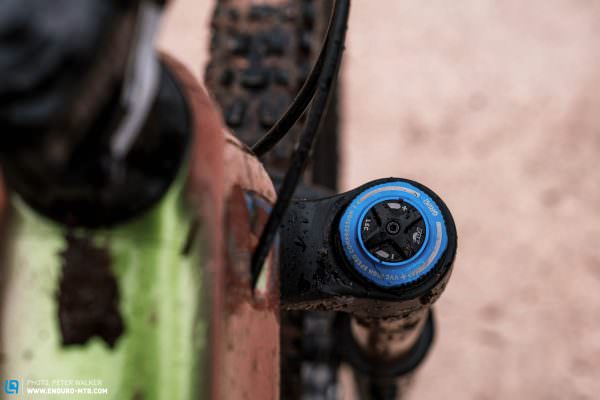

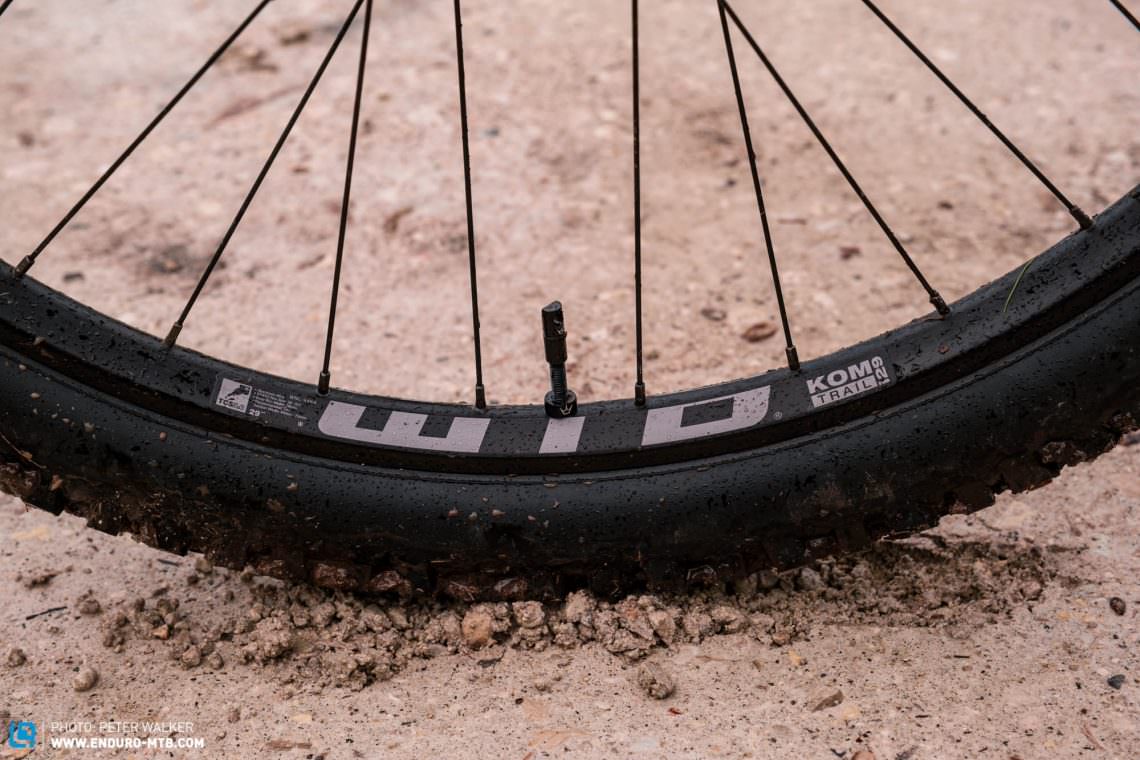
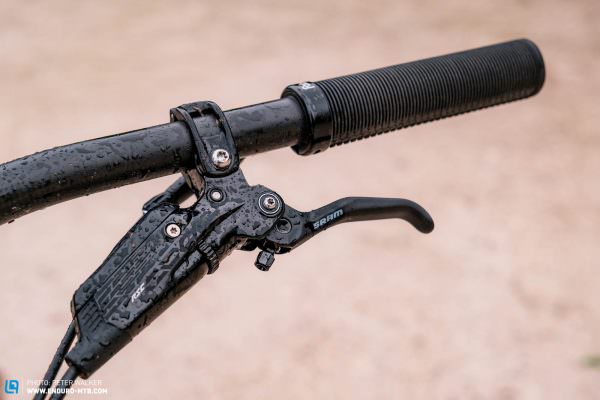
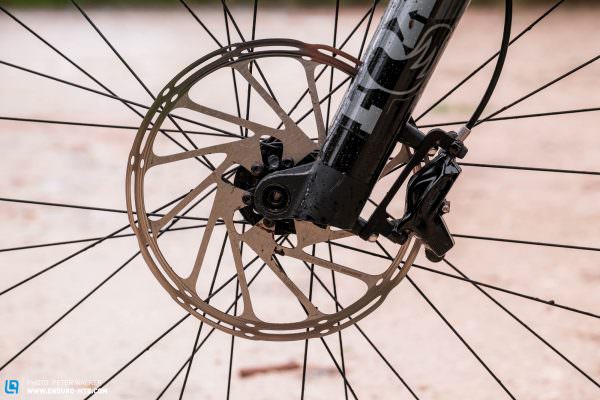
The components of the entry-level 2022 Cannondale Jekyll 2
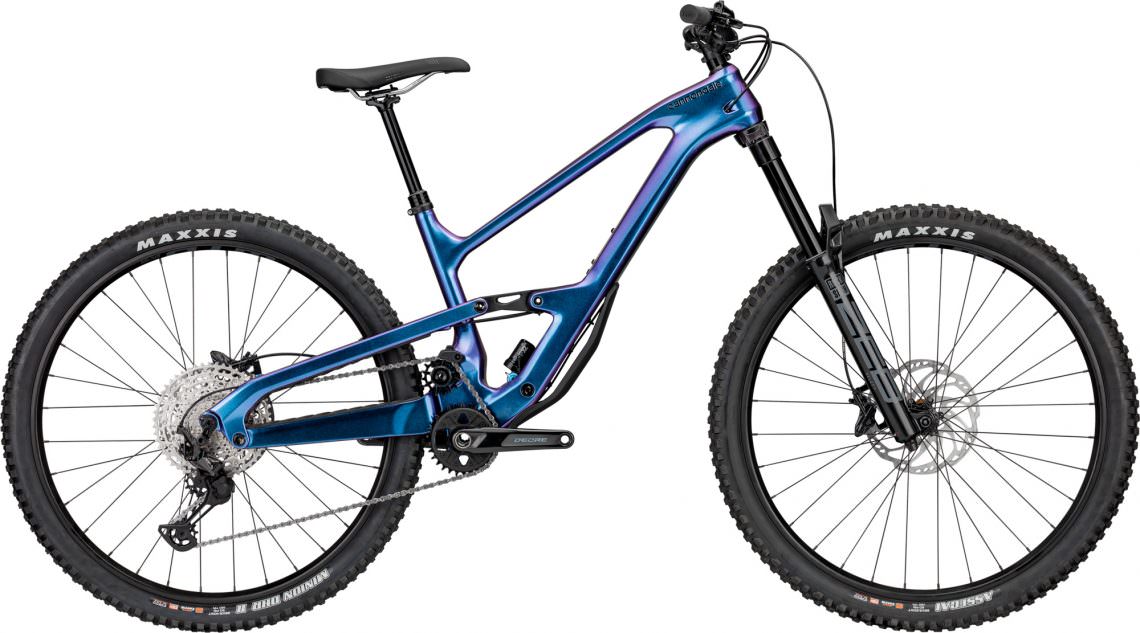
The € 4,599 Cannondale Jekyll 2 comes equipped with a RockShox Zeb Select fork, offering 170 mm travel via the Charger RC damper, limiting adjustability to low-speed rebound and compression. At the rear you’ll find a FOX DPX2 Performance shock, which, compared to the flagship model, only offers low-speed rebound and compression adjustment. The DEORE brakes and groupset are supplied by Shimano and although the groupset performs well for its price range, we would recommend upgrading the brakes. They cannot deliver the same level of stopping power as the flagship model with its extra-large rotors. The tires on the Jekyll 2 aren’t suitable for the demands of enduro racing either and should be exchanged for models with a more robust casing and a softer rubber compound.
First ride review – How the Cannondale Jekyll 1 behaves on the trail
We had the exclusive opportunity to test the bike for several weeks on our local test trails near Stuttgart. Editor-in-chief Robin and test rider Nils got a first impression in fairly moist conditions. Multiple Enduro World Series winner and Cannondale development rider, Jerome Clementz, accompanied us to share his knowledge of the bike.

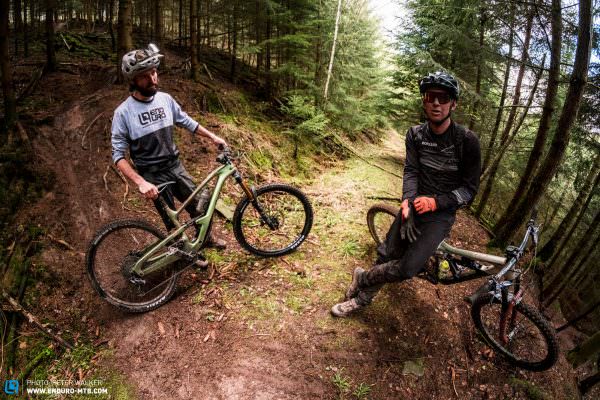
The compact Jekyll places the rider centrally on the bike, offering efficient pedalling on flat terrain and moderate climbs. That said, you’ll want to use the climb switch on steeper inclines and uphill trails.




As expected, the rear triangle responds very sensitively on the descents and generates lots of grip. Nevertheless, it offers enough support to allow you pop off lips and obstacles on the trail. The rear end remains active and continues to provide traction even under hard braking with the rear wheel locked. The bike’s handling is agile and playful through tight corners and when changing direction spontaneously. When things get really steep, the new Jekyll feels secure and composed, managing to stay on course even at high speed. It also gives you the impression of having more travel than specified, as the Jekyll absorbs botched landings with ease.
Tuning-tips: tighten/check the spokes | more robust tires

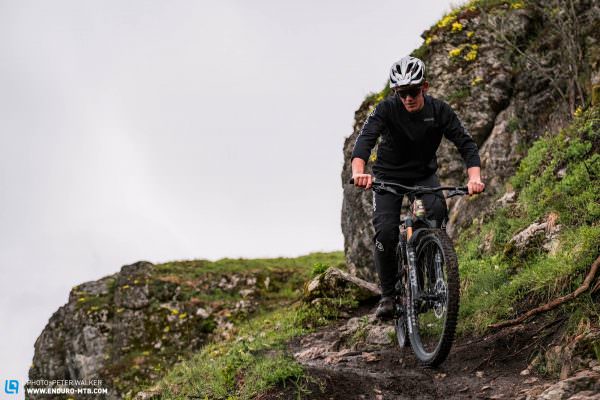

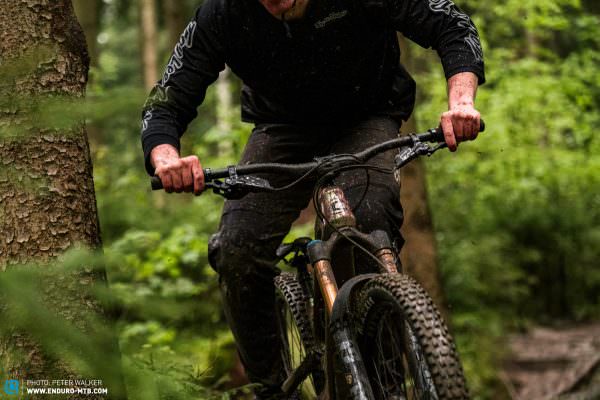
Cannondale have created a real eye-catcher with their new Jekyll 1. It’s not only the shifting colour but also the innovative rear suspension design that attracts attention. The suspension delivers a convincing performance, responding sensitively off the top and offering a lot of grip even through open corners. Though the standard build isn’t quite race ready, the bike’s handling is agile and playful yet confidence inspiring on fast and steep terrain, which should make it a hot contender at the races. We’re curious to see how long it will take before it appears on the EWS podium.
Tops
- confidence instilling on steep and fast terrain
- active suspension generates plenty of grip through corners
Flops
- puncture prone tire casing
- spokes lost tension
Did you enjoy this article? If so, we would be stoked if you decide to support us with a monthly contribution. By becoming a supporter of ENDURO, you will help secure a sustainable future for high-quality mountain bike journalism. Click here to learn more.
Words & Photos: Peter Walker









